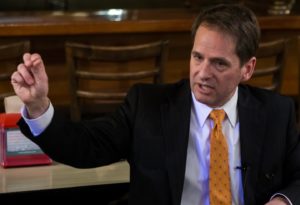Study: New Hampshire ed funding grows as enrollment drops
(The Center Square) – A new study says public school funding has skyrocketed in New Hampshire while enrollment fell.
The Josiah Bartlett Center for Public Policy said in its new study, “Falling…

(The Center Square) – A new study says public school funding has skyrocketed in New Hampshire while enrollment fell.
The Josiah Bartlett Center for Public Policy said in its new study, “Falling Students, Rising Spending: N.H. Public School Funding, 2001-2019,” teacher pay in the Granite State is too low when compared to other states, but that isn’t necessarily a product of levels of inadequate funding.
According to the report, spending in public schools is 14.4% higher than the national average yet 5.3% below the national average for teacher salaries.
In the executive summary, the policy group said that while taxpayers are “continually told” that local public schools are underfunded, research shows that “New Hampshire taxpayers have lavished” dollars on public school districts that “far exceeds spending increases” on other state funding services.
According to the study, New Hampshire public school funding increased by more than $1.5 billion from the 2000-01 academic year through 2018-19. However, enrollment fell by 29,946 students over that same period, a drop of 14%.
The organization reports that of those investments in education when capital and debt spending are removed from the equation, spending did increase by 74%. However, according to the study, much of that spending went to hiring new staff despite declining enrollments with a 15% rise in staffing.
However, as spending increased and enrollments fell, so did the state’s scores in reading and math, which fell 4 points. But, those scores saw a 15-point jump nationwide as New Hampshire schools fell behind.
The New Hampshire Department of Education said earlier this year that education spending rose during the pandemic due to an influx of federal and state relief funding.
“For the past two decades, student enrollment in New Hampshire has experienced a steady decline,” Commissioner of Education Frank Edelblut said in a statement. “While the pandemic accelerated declines in the fall of 2020 with a 5% drop, there was a slight uptick in enrollment in 2021 reflecting a COVID rebound, followed by a more typical decrease of 1.1% in 2022. Other facts, such as lower birth rates and an aging population, have all impacted student enrollment throughout the past two years. It is important for school leaders to understand how declining enrollment numbers may be impacting their districts and how to plan accordingly for the future.”
Even as assessment scores fell, staffing increased, according to the study, as spending for public schools rose 66.8%. In 2001, the state spent just $8,245 per student, and it swelled to $18,905 per student in 2019, a 129% increase. The increase lifted the Granite State from 4% below the national average in 2001 to 25.7% above the national average in 2019.
Teacher salaries rose through the study by 12%, with a mean wage of $59,182 per year, which was higher than the national average of $62,304, a 5.4% increase. In comparison, teacher salaries in Massachusetts average $82,042 per year, a difference of 13%.



